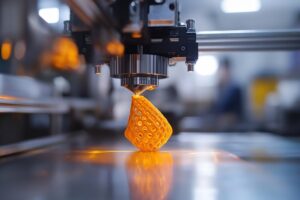Understanding the Materials Behind High-Performance Vehicles

Many remarkable advanced materials go into designing and constructing modern high-performance vehicles able to deliver blazing speeds, superior handling, and increased fuel efficiency. Advanced metals, polymers, ceramics, lubricants, and composites all play crucial roles in creating vehicles able to withstand the intense stresses of racing conditions. Gaining an appreciation for how these high-tech materials are deliberately selected and applied allows for a deeper understanding of the material science foundations behind creating today’s amazing land speed record cars, fighter jets, and innovative passenger vehicles.
Lightweighting Vehicle Bodies and Structures
A vital strategy for improving vehicle acceleration, braking, cornering, and fuel economy is replacing traditionally heavy components with exceptionally strong yet lightweight alternative materials wherever possible to cut overall vehicle weight. Ultra-high-strength steel alloys now exist that demonstrate over three times the yield and tensile strength compared to mild steels formerly used, while only minimally increasing mass. This allows for the construction of safer steel vehicle bodies with the utilization of less material.
Replacing heavier traditional materials with advanced lightweight alternatives for even small vehicle components pays big cumulative dividends, allowing significant slimming of overall vehicle weight. According to the good folk at Aerodine Composites, some supercar concept vehicles now incorporate advanced composites to nearly eliminate reliance on metals entirely.
Advanced Composites Enable Leaps in Performance
Many record-setting land speed cars and high-performance fighter jets rely extensively on advanced composite materials comprising exceptionally rigid carbon fibers embedded within tough plastic polymer resins to achieve leaps in speed and maneuverability. The carbon fibers themselves show a higher strength to weight ratio than even aerospace aluminum alloys, while the surrounding resin matrix transfers load forces between individual fibers, preventing smaller scale failures from cascading.
Together, advanced composites form durable parts with tremendous strength and stiffness, yet weighing a mere fraction compared to equivalent steel or aluminum components. Replacing heavier metal components with aerospace composites translates into faster acceleration/deceleration, tighter cornering reflexes, and crucial fuel savings from lower takeoff weight or momentum to overcome when changing velocity.
Reinforcing Tires and Brakes for Extreme Performance
To safely handle the blistering straight-line speeds and intense lateral cornering forces generated by 1000+ horsepower engines, high-performance vehicles demand specially formulated tires and brake systems reinforced with advanced materials. Only through expertise in specialty tribological materials tailored for extremely demanding applications can tires and brakes safely withstand the rapid acceleration, speeds, and braking intensities seen in professional motor sports.
Withstanding Extreme Engine Environments
To reliably generate abundant horsepower numbers exceeding 1000, modern high-performance engines subject components directly surrounding combustion zones to positively blistering operating environments, with pressures potentially approaching 1500 psi and temperatures beyond 1000°F even as engine RPM approach 10,000. Thus, very sophisticated metallurgy is required to formulate specialty nickel-based superalloy exhaust valves, titanium alloy connecting rods, plasma-coated piston rings, and similar components able to withstand such punishment without buckling or melting altogether.
Furthermore, fully synthetic motor oils employing viscosity enhancing polymers help resist breakdown while providing superior lubrication and cooling for such high strung powerplants relative to conventional mineral oils. Through expertise in specialized materials engineered specifically for this type of engine environment, such staggering horsepower figures can be achieved while preserving reliability.
Conclusion
From advanced composites enabling record-shattering speed machines to metallic alloys surviving the intense heat and pressure within engines, the field of material science sits at the core of designing incredible high-performance vehicles. As researchers expand the horizons of what’s possible creating nanoscale structures and smart materials, future vehicles will undoubtedly push acceleration, efficiency and reliability into previously unimaginable territories. Integrating radical material science innovations with automotive engineering creativity ensures an exciting future awaits on the road ahead.







